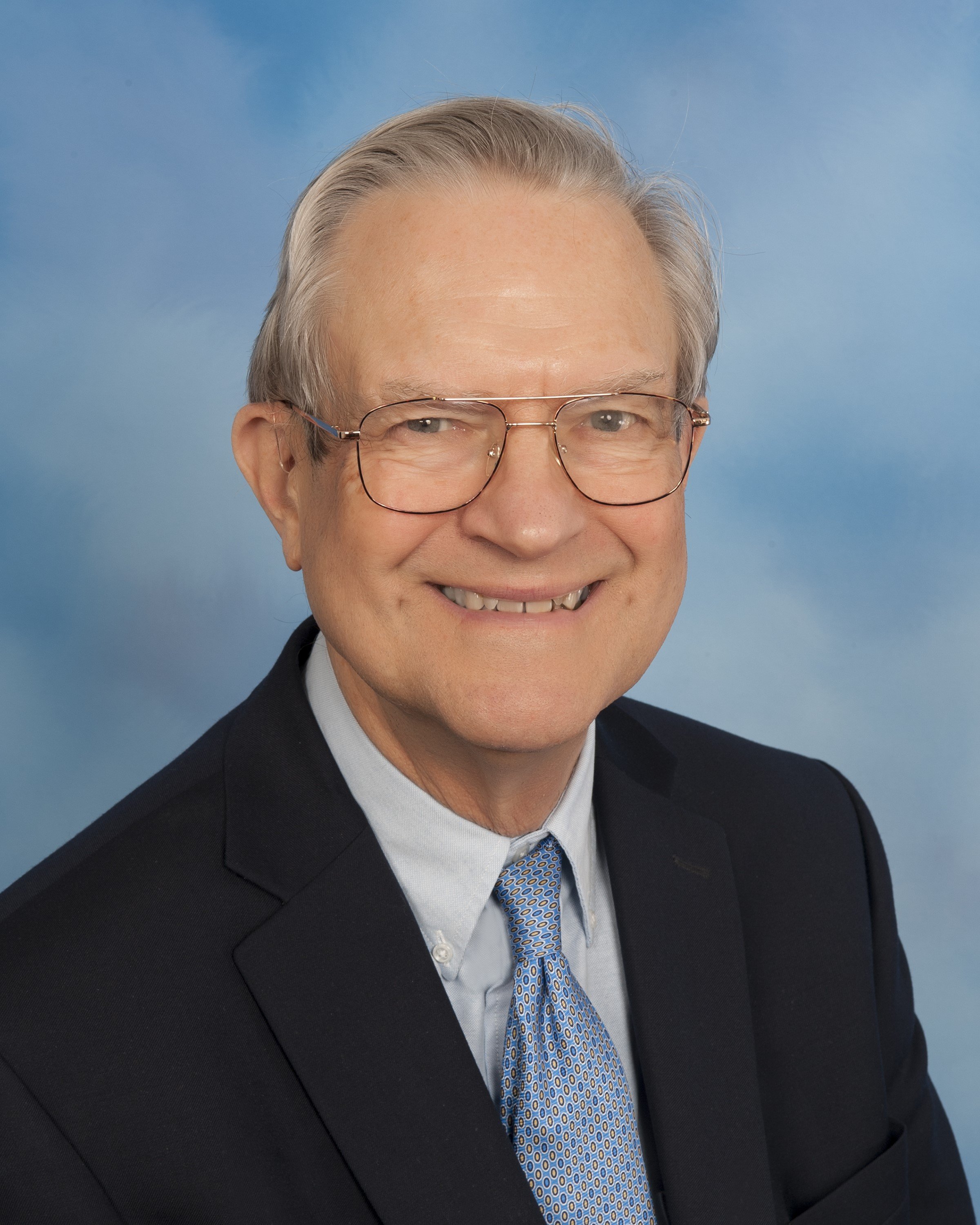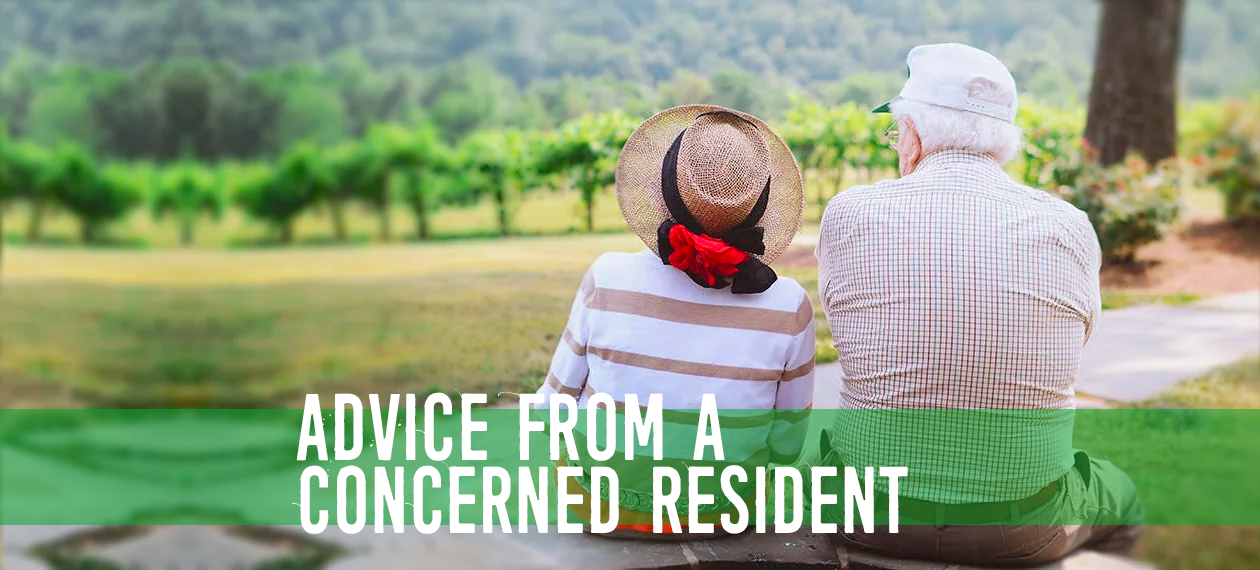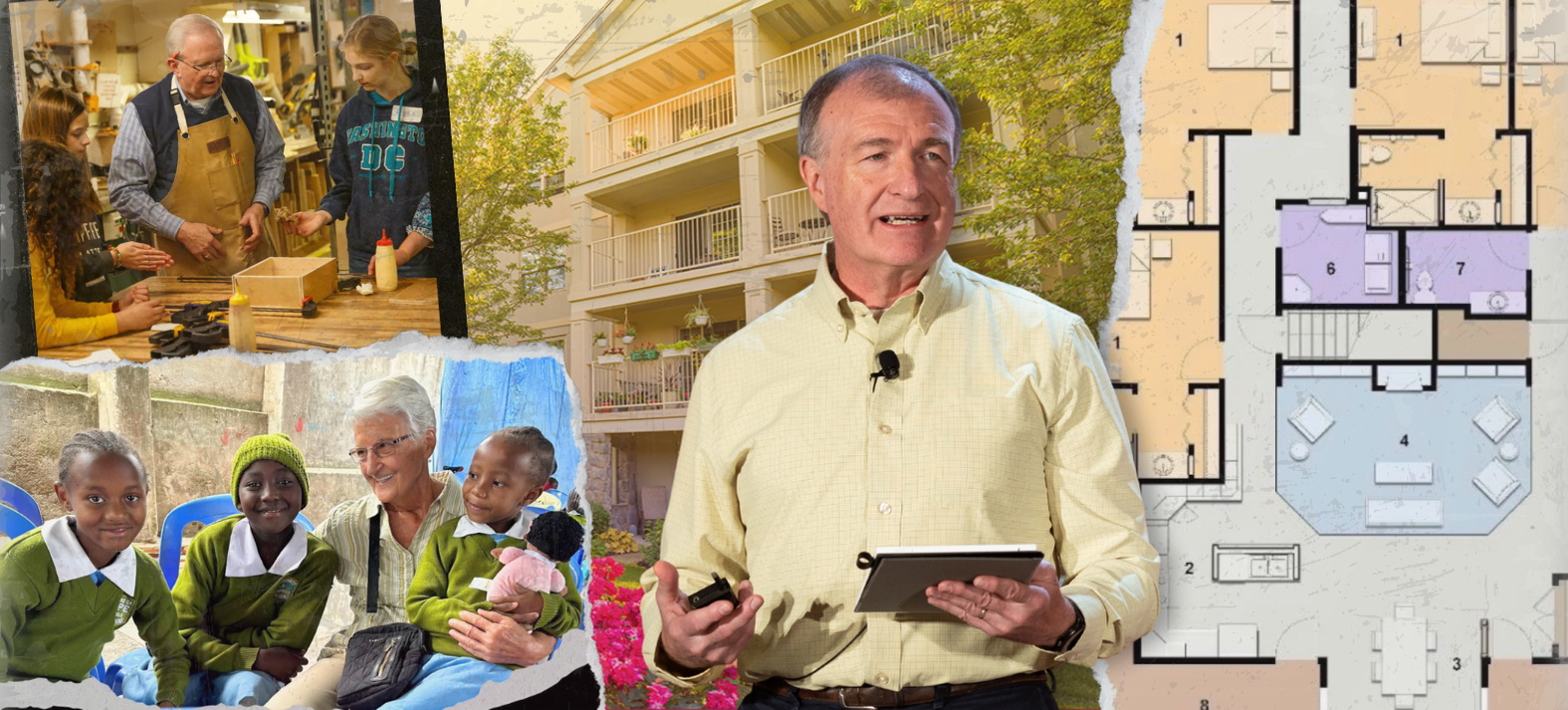When senior living providers gather to envision the future and to share best practices, the voices of those they serve – residents, families, prospects, general public – are usually present only in the abstract. There’s an irony in this. After all, senior living is unique in the intimacy of the integration it requires between the human side of business and the humanity of those served.
This article is written for senior living influencers, those executives, leaders, businesspeople, investors, and others who are shaping the industry’s response to changing cultural dynamics.
I am not an influencer. I am a resident, a customer, a person who bought the dream of safe, secure, fulfilling aging. While as a resident I am not an influencer, the collective marketplace of prospective residents and customers is the ultimate influencer. Without customers, no business can succeed.
Shaping the Future
The senior living trade press is full of predictive articles: new models that will disrupt the industry – smaller living modules, larger living modules; new sharing technologies, old-fashioned trusted caregivers; and on and on. When we look at these speculations, there are two distinctive aspects that stand out – emerging trends in financing and operations.
For nonprofit providers the financing side primarily involves tax exempt debt, and there are specialized advisors who counsel on current interest rates and exempt-market developments. In the for-profit world, REITs have come to dominate. Both debt and REIT investors share a simple worldview. More is better. Other circumstances, even normal balance sheet risk, are secondary to the highest return for the least investment.
Money matters, but it’s operations that justify a business’s existence. No business can thrive without customers. It’s through its operations that a senior living business either attracts customers… and grows… or loses market appeal and withers into obscurity. Moreover, it’s in attentiveness to improving operations that senior living can better serve its residents, enhancing the industry’s reputation for performance, and gaining a name for exceeding expectations.
Of course, some readers may add marketing as a third leg for business success. Marketing, though, is dependent on the product offering. If the product is something that people want, and will eagerly embrace, then all marketing has to do is to ensure popular awareness. That’s a much easier task than trying to sell a flawed product. Operations defines the product for senior living. Hence, marketing is part of operations. Operations is the heart of the business and even the best marketing can’t save a business from itself.
Change is Coming
There are precedents to prove the importance of operations excellence. One is the tale of Toyota. Toyota entered the American market in 1958 (the year I graduated from college). By 2007, fewer than fifty years later, Toyota surpassed General Motors and sold more cars and trucks around the world than any other manufacturer. During that time, Toyota broke the conventionality of the Big Three American carmakers simply by improving operations to produce reliable cars.
Money matters, but it’s operations that justify a business’s existence
Senior living today is not unlike Detroit in 1958. The signs of change are there for those with the courage and the vision to see them. In 1958, Packard Motors shuttered its Detroit factory. Recently, senior living failures in Riverside, CA and Tampa, FL have received little attention from the industry. There is also evidence of senior living consolidations – usually a sign of weakness – at a time when senior living should be thriving and growing, riding the demographic wave of the baby boomers. An industry that is deaf to customers and potential customers is an industry destined to fall victim to its own pretenses. Complacency and conventional thinking are the biggest challenges.
Senior living operators know that change is coming. The word “disruption” is used regularly at conferences and in conversations. For students of business history, examples of disruption abound. The promise of canals was disrupted in short order by railroads. The telephone disrupted the telegraph, but that took longer. In our own time, we credit technology with disruption and believe that those enterprises that embrace a digital future can shield themselves.
More disruptive, however, on the larger stage, may be the flattening of hierarchical organizations to free the latent innovative, self-optimizing talent of individuals. Those displaced often find inspiring, fulfilling later careers as work moves from mechanical routine toward more imaginative, intellectually challenging opportunities.
Aging in Place
Senior living is not immune to these trends. Disruption occurs when change makes a new model offering more attractive for customers and the employees who serve them. As a general rule, consumers move from the old toward the improved. For senior living that means communities and other elder living options like those that senior living influencers might choose for themselves. Most such influencers would not move to today’s “big box” senior living. For now, like the influencers, most Americans emphatically proclaim that they want to “age in place.”
“Aging in place” generally means aging in conventional, intergenerational housing or neighborhoods without the taint of institutionalization. The consequence of that preference is that, increasingly, the entry age for senior living has been rising. Though it’s true that the upper limit of vitality has been extended, the transitions through aging are largely unaffected. The age continuum may have moved but the stages still call for responses. People need a haven, where they can feel safe and protected with whatever life may throw their way.
Recently I met a woman who was volunteering in the senior living community where I live. She introduced herself to me and said that she wished she could live carefree as she saw us living. She added that she was too young to move in, but that she and her husband planned to make the move as soon as it was permitted. She is 52.

Catering to such a prospect would be a lifestyle sale. There are a number of lifestyle cultural currents beckoning just now. Some young people, for instance, choose tiny homes and capsule hotels, preferring freedom and flexibility over pretentious luxury. But, at the other end of the scale, luxury living units in metropolises like New York City are selling for millions of dollars. These trends are as variegated for the elderly as they are for the young, and it’s the course of wisdom to get the product just right.
One trend that does seem to have staying power is toward more urban settings for senior living and less age segregation. Many prospects are uncomfortable with the idea of living predominantly with the very old.
Lost Opportunities
Our 52-year-old volunteer, however, eager to have the convenience of communal living, represents an underserved market segment. The loss of prospects is large. Census data for the population in 2018 suggest that limiting the senior market to those 62 and over, instead of opening it to all who are, say, 50 and over, reduces the market by 44% of its potential. It wasn’t long ago that people thought that age 75 was a normal move-in age for senior living and now it’s risen to be in the early 80’s. The market for those 81 and older is just 45% of that for those 75 and older.
It’s common for providers to speak of these trends as though they were irreversible. The shrinking market, limited to those in their 80s and older, is a minuscule fraction of the total potential market among empty nesters who might happily choose carefree living. The result of industry myopia is a convention arguing that senior living is now a needs-driven sale rather than a lifestyle sale. That, in turn, becomes a self-fulfilling limitation.
It wasn’t long ago that people thought 75 was a normal move-in age for senior living and now it’s risen to be in the early 80’s
It’s not that the empty nesters, now contemplating “retirement” and aging, don’t want to live communally. The anecdotal data suggest that the baby boomers love collective living. What they don’t want is to be institutionalized, which can feel very much like disenfranchisement and disempowerment. They look at today’s senior living options and are put off by how it appears and what they experience when they visit. The result is that senior living is failing to reap its full share of the growing demographic bulge of older Americans.
Disruption is Here, Now
In short, senior living disruption is taking place right before our eyes with little being done to counter the shift or to benefit from the lifestyle opportunity. At the same time as the all-inclusive cruise industry is growing rapidly, senior living is increasingly unbundling pricing in pursuit of increased revenues per resident.
Moreover, the very old use more services so they are the best customers to drive revenue growth in an unbundled pricing enterprise. The result is an inevitable spiral from active living toward assisted living in communities that might otherwise have been intergenerationally attractive. No wonder younger people look at senior living and conclude it’s not for them.
Many people who’ve grown up in the business of serving seniors take pride in their calling. They are doing good and they feel positive about that. Moreover, many of them work for nominally nonprofit organizations so they feel that they are serving a higher purpose than what they imagine is the case with their profit-obsessed competitors. The truth, though, is that they are living in a bubble, insulated from their customers and oblivious to the shrinking of market share. Moreover, the more successful for-profit competitors are customer focused which they recognize as the path to profit.
Popping the Bubble
Inside the bubble, it’s very comfortable. There are regular conferences in which the joys of service to the elderly are praised. Over the years, the camaraderie of a shared calling builds lasting friendships.
What goes unnoticed by all but the most astute is that the bubble is constricting. It hasn’t burst but acuity levels for those served are rising. Increasingly, the life haven that the industry provides to those it serves is nothing that industry executives would choose for themselves. Today’s industry is fine for aging parents. It’s nice to know that they are cared for in their dotage. But, “we’re not ready for that yet.”

For several years, I’ve been following the life journey of two baby boomers who were very drawn to the carefree, communal lifestyle of continuing care retirement communities. Dan and Lori are just entering their 60s. Like my newfound 52-year-old friend, they were very drawn to what the product appeared to be. They even set up a website as CCRC Lifecast. For a long time, they were enthusiastic, and they developed a high measure of expertise. Dan and Lori Winegarden are planners. They are influencers.
They were systematic in their search for living and lifestyle options for the next phase of their lives. They set out to share their findings with their contemporaries and others. They came to that challenge with professional experience in public policy, entrepreneurship, finance, real estate, and senior living design and construction. Their initial efforts concentrated on CCRCs. Today, though, they have recently shifted their focus to Aging With Freedom, a subtext for their prior CCRC hopes, with a rebranded, refocused website. Clicking now on CCRC Lifecast takes you directly to Aging with Freedom. Their journey is instructive for the industry.
Aging with Freedom
Dan and Lori began by sharing their investigations of where to live in retirement. They visited CCRCs and posted reviews on their CCRC-focused website. Along the way they discovered that the choice of housing lifestyle was tangled up with other issues and couldn’t be neatly separated. They also discovered “that the senior housing industry isn’t especially transparent with financial or qualitative data.” In short, their initial enthusiasm was muted by what they found, so they broadened and shifted their focus to what they were really seeking, i.e. “aging with freedom.” If there were senior living options that gave them that, they would likely have gone with it.
The absence of full freedom is the essence of institutionalization: limits on choice and expression; rules established by others; and a sense of being an object of weakness rather than a soul to be realized. Senior living residents voice it differently from the way Dan and Lori might. After all, the residents are already committed.
Their best hope is customer-uplifting reform. The exclusion of residents from senior living decisions has led to rallying cries ranging from Lifespace Communities’ Florida resident, retired General Basil Pflumm, who calls for justice for residents, to Seattle Aljoya resident and Presbyterian Pastor, Bob Nicholson, who counsels, “If it’s about us, then with us.”
Big Ideas
There are several things that might boost the senior living market penetration. Here are the big ideas:
1. Provide financial guaranties for residents comparable to those for financial products.
Guaranties can establish financial trust and ensure residents that they will be safe as their abilities to fend for themselves diminish. Moreover, appropriate guaranty legislation can allow the industry to lift business practices to higher standards.
2. Create communities that are attractive for people of all ages and vitality.
The cultural attitude toward authority was changed by the twin shocks of the Vietnam War and Watergate. Those who came of age in that era, and afterward, expect to be engaged in decision making and to have freedom in determining their life circumstances. The existing senior living model with top down rules making and staff whose efforts are “for” the residents, rather than “with” them, will have to give way to new more inclusive living models. There’s also a sameness to today’s senior living offerings, i.e. buildings fronted by a porte-cochere. That’s unlikely to be the senior living product for the coming decades. Moreover, people who have enjoyed ownership in their homes are reluctant to subordinate themselves to ownership by others.

Typical senior housing porte-cochere
3. Develop product offerings for neglected socioeconomic sectors.
At one end of the spectrum are luxury, market priced CCRCs. At the other end, there is a developing safety net including proven programs like PACE (Program of All-Inclusive Care for the Elderly), though affordable housing remains a public policy challenge. The middle market is largely neglected. Erickson pursued economies of scale as a way to make communal living more affordable. Others are developing networks of small-home assisted living to cope with end-of-life challenges. A creative disruption might be to break up vacant residential units into affordable micro-apartments. But the vision to open the larger market has yet to evolve.
4. Shift the focus from financial aspects – nonprofit vs. for-profit; leveraged expansion vs. economic viability; real estate values vs. business profitability – toward operations.
Operations is the margin generating business that provides the cash flow to cover debt or REIT obligations. Thus, optimizing operations can keep the financial aspects of the business positive. That means meeting the public and consumer wish for in-home services, engaged communal living, standby age-related assistance, and the desire of many for carefree, stress-free living. Freedom from everyday chores can open new avenues of productivity for those who no longer need to punch a clock or answer to a hierarchy of bosses. Enabling such creative continued contribution to the larger community can be empowering for residents and enriching for society.
The Customer is Always Right
The answers are as clear as they have ever been. Those businesses thrive which give customers what they want. With growth in customers come the margins to fuel profits and build value. This is as true for senior living as for any other industry.
Many aging consumers want home ownership. Give them home ownership. There’s money to be made in supporting the wish for ownership. Consumers want empowerment. Give them the final say in the rules that govern them. Consumers want freedom. Give them freedom from everyday chores. Give them freedom to travel. Consumers want adventure. Give them opportunities to find adventures, either for themselves or vicariously. Consumers want flexibility. Let aging consumers have the same flexibility for living that younger people enjoy.
It’s not difficult, though it does take imagination and courage. This requires a change in industry thinking away from knee-jerk rationalization of the status quo and toward an embrace of a new tomorrow.
The takeaway is that the influencers for the future of senior living aren’t those who now earn their livelihood from the industry – though some may be. They are those who envision the customer of the future and who serve that customer well. Business succeeds where the customer dwells. Meeting customer expectations, and bringing customers new value, is the path toward profit and success.
------------------------------------------------
Exceeding the expectations of residents will be a topic of discussion at SLIF '19 taking place June 23-25 in Santa Barbara. Request an invite here.

Posted by
SLIF heads to Carlsbad!
The One of a Kind Retreat for Senior Housing Leaders.
May 31 - June 2, 2026 | Carlsbad, CA
Learn More









Comments